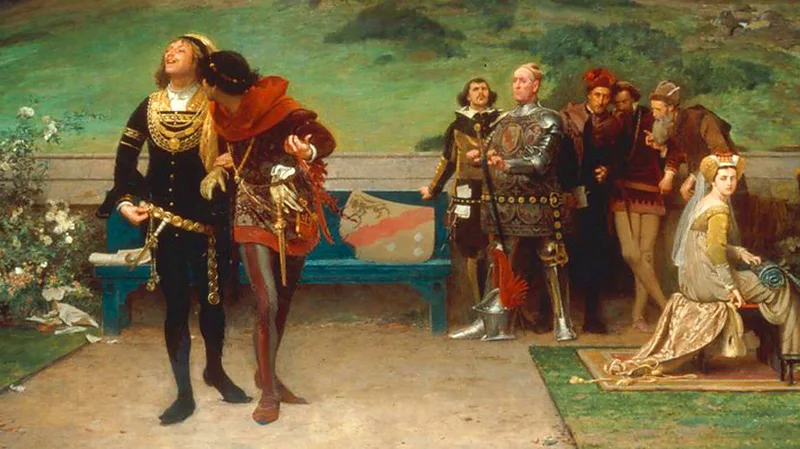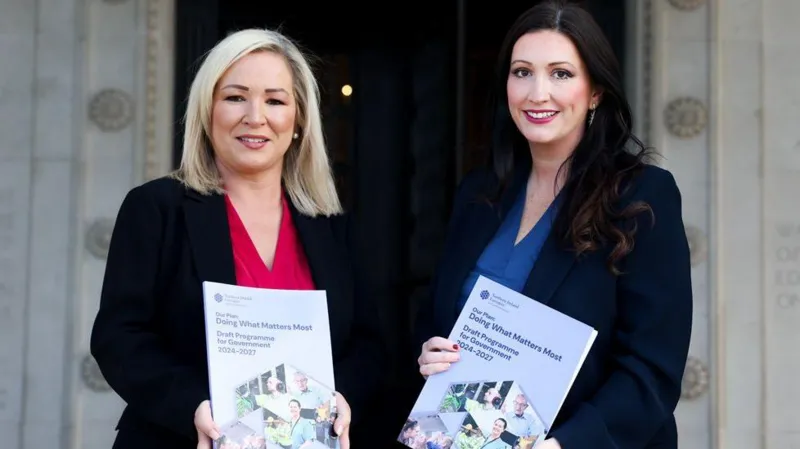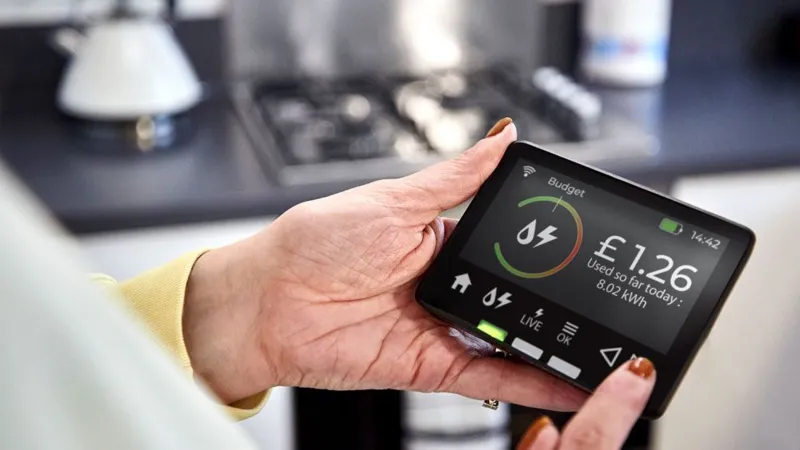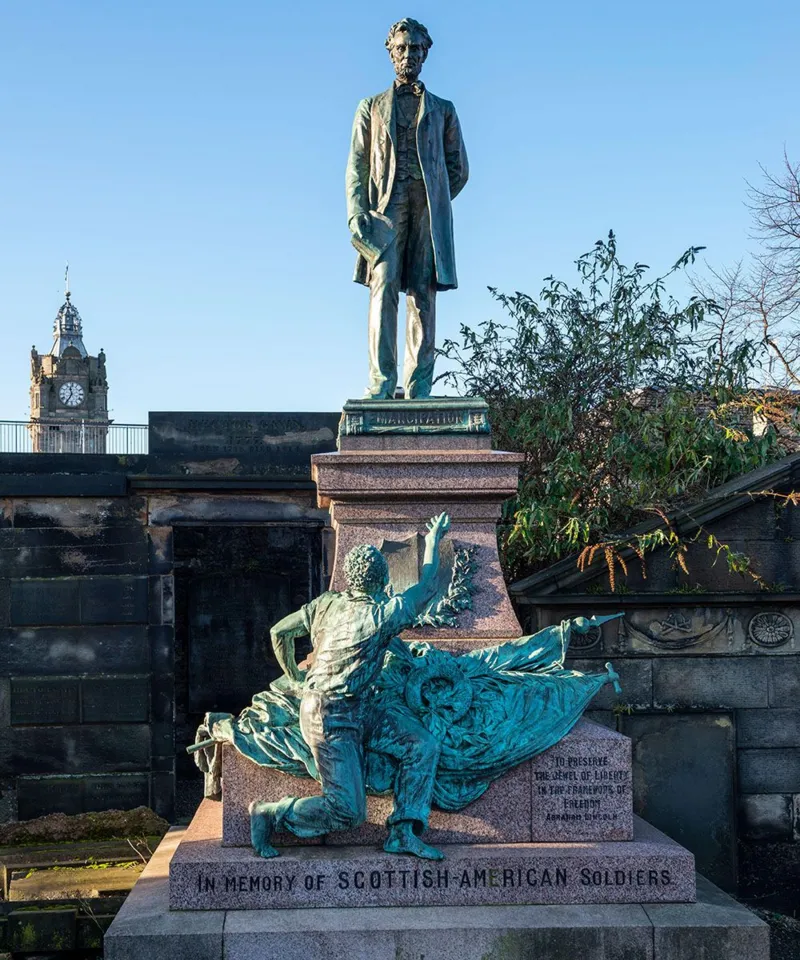Edward II: Did a gay love affair spark a 14th-Century royal crisis?

Edward II: Did a gay love affair spark a 14th-Century royal crisis? A fresh performance of Christopher Marlowe’s pioneering drama about the 14th-century King of England refocuses attention on his connection with his male “favourite” Piers Gaveston.
The world-famous Royal Shakespeare Company (RSC) will debut a new production of Christopher Marlowe’s Edward II this week at its Stratford-upon-Avon headquarters. This important 16th-century drama about a troubled LGBT ruler is more than 430 years old, but it still seems painfully present. Marlowe portrayed a monarch whose power and abilities to lead are severely weakened by his relationship with another man. Modern British monarchs have primarily ceremonial power, but open queerness in the royal family is becoming increasingly rare. Lord Ivar Mountbatten, a second cousin of King Charles III who is now appearing in the US reality program The Traitors, is often regarded as “the first openly gay royal.” Marlowe’s play depicts the hardships of Edward II, the real-life King of England who ruled from 1307 to 1327. A year after succeeding his father, Edward I, Edward II married the King of France’s daughter, Isabella, in an effort to improve Anglo-French ties. Queen Isabella had four children with Edward II and rose to become a strong force in her own right, earning the nickname “the she-wolf of France”. But Marlowe’s play is primarily about the king’s contentious connection with his male “favourite,” Piers Gaveston, and how this triggered a constitutional crisis from which he never recovered.
The dramatist
The dramatist never explicitly states that the two guys are lovers, but the homosexual subtext is not subtle. In one moment, after he is reunited with his favorite, Edward begs him to “kiss not my hand [but] embrace me, Gaveston, as I do thee”. In another, Isabella laments the fact that “the king regards me not, but [instead] dotes upon the love of Gaveston”. Only a deliberately obtuse reader of Marlowe’s writing would miss the insinuation.
Marlowe’s play has helped to solidify the real-life Edward’s disputed but not completely false reputation as a “gay king” since its premiere. Simply put, we will never know for definite whether Edward II had a love and/or sexual relationship with any of his male favourites. When it was first performed in 1592, however, historians were able to freely debate the monarch’s queerness. “The earliest text we have accusing Edward of some kind of sexual transgression was written around the time Gaveston was murdered [in 1312],” says historian Kit Heyam, author of The Reputation of Edward II, 1305-1697. “It says that at the beginning of Edward’s reign, there was ‘much lechery habitually practised‘.”
“Lechery” was used to designate any form of “sinful” sexual behavior, according to the mores of the Catholic Church, which held religious authority in England at the time. “The text seems to be suggesting that this behaviour will stop now that Gaveston’s dead, but it stops short of saying that the sexual transgression was actually between Gaveston and the king,”
Heyam explains
Heyam explains. In the centuries following Edward II’s death, it became less hazardous for writers to imply that Edward II was sexually deviant, but the introduction of the printing press in the 15th century amplified the rumour. “Writers would sensationalise their texts to make them more commercially appealing, so they started saying that Edward II was definitely sexually transgressive, and it was definitely the fault of his male favourites,” Heyam recalls. “But Marlowe was the first person to join the dots, and say that Edward II was actually sleeping with them.”
Daniel Evans, an actor and RSC co-artistic director who plays Edward II in the new production, believes Marlowe’s play is still “radical” in 2025. Director Daniel Raggett piqued his interest in reviving it by posing a “provocative,” hypothetical question that highlights the piece’s enduring relevance: “What would happen if our current king, Charles III, suddenly said: ‘I know I’ve been married for a while, but I actually want someone called Colin by my side, not Camilla?'”It may not spark a civil war like Edward’s connection with Gaveston does in Marlowe’s play, but Evans wonders how acceptable today’s “supposedly liberal and permissive society” would be. “Deep-rooted homophobia still exists, and the whole notion of the British Royal Family, of lineage and heirs, is very dependent on a heteronormative family structure,” he says.

Boundary-breaking productions
Evans and Raggett were also captivated by the play’s late-twentieth-century revival, which is intrinsically tied to the growing LGBTQ+ rights movement. Dr Will Tosh, head of research at Shakespeare’s Globe and author of Straight Acting: The Many Queer Lives of William Shakespeare, claims that Marlowe’s play “doesn’t have a hugely long performance history” outside of the century in which it was written. He observes that throughout the 18th and 19th centuries, it effectively went “into cold storage” since the concept of a male king having a male lover would have been unacceptable to orthodox Georgian and Victorian audiences. The play’s later rebirth in the latter part of the twentieth century aligns with a “more curious and less judgmental attitude toward queer intimacy,” according to Tosh.
Ian McKellen played Edward II in a Prospect Theatre Company performance that toured the UK in 1969, two years after male homosexuality was decriminalized in England and Wales but 11 years before the same progress was accomplished in Scotland. Gaveston was portrayed by James Laurenson, a New Zealand actor who died last year, and their on-stage kiss sparked controversy when the performance landed in Edinburgh. “The late councillor John Kidd took offence to this show of male affection, particularly as it took place on a stage erected within the assembly hall of the Church of Scotland,” McKellen recounts on his website. Though a pair of local police officers were dispatched to monitor the show, McKellen says that they found “no problem” with its contents, and that the brief uproar “guaranteed full houses for the run.”
When this production
When this production aired on the BBC a year later, it made history by featuring the first same-sex kiss ever shown on British television. In a 2017 interview, McKellen stated that the Prospect production had a significant influence on “many, many Americans” who saw it on the US network PBS. “They saw for the first time in their lives two men kissing and couldn’t believe it, but took comfort from it,” he told me. Derek Jarman, an artist and homosexual rights activist, directed a 1991 film adaptation of the play, which established its place in the LGBT canon. Jarman’s film, which uses a purposefully anachronistic mix of modern and medieval sets, costumes, and backgrounds, amps up Marlowe’s homoeroticism and reframes the plot in light of the current LGBTQ+ rights movement. As Gaveston (Andrew Tiernan) is tortured for his sins, Jarman depicts police battling with gay-rights demonstrators from OutRage!.A year before Jarman’s film, the RSC presented Marlowe’s play, with Simon Russell Beale playing the lead character. In her 2011 essay Performing Queer Edward II in the 1990s, Angela K Ahlgren claims both Jarman’s film and the RSC production of the play “reflect notions of queerness circulating in the 1990s because they stage violence, same-sex desire, and references to contemporary gay political issues.” At the time, the HIV/AIDS epidemic was ravaging the homosexual male community internationally, and LGBT campaigners in the UK were demonstrating against Section 28, a piece of legislation that forbade the allege
Nonetheless, Marlowe’s play should never be considered a work of historical gospel. Tosh describes the playwright’s “major dramatic innovation” as “compressing the timeline” to make the king’s connection with Gaveston the “central drama” of his life. In truth, once Gaveston was assassinated in 1312, only five years into his 19-year rule,
Edward II formed
Edward II formed alliances with other powerful masculine figures. However, Marlowe presents his relationship with Gaveston as by far the most emotionally meaningful.
“After Gaveston’s death in the play, Edward uses his memory to justify anything he does. And later, when Edward is imprisoned and abused, he uses Gaveston’s name once more as a prayer for deliverance,” Tosh argues. Of course, Marlowe’s play encourages us to form major assumptions about the two men’s connection. Historian Kathryn Warner, author of Edward II: The Unconventional King, believes we may never know how Edward II felt about Gaveston and his other male favorites since the king did not keep a diary or write personal letters. “All we have is the word of outsiders, which is obviously open to interpretation,” she informs me. However, considering that he fathered an illegitimate child with an unknown lady, Edward II’s sexuality was most likely more convoluted than his image as a “gay king” would indicate.



